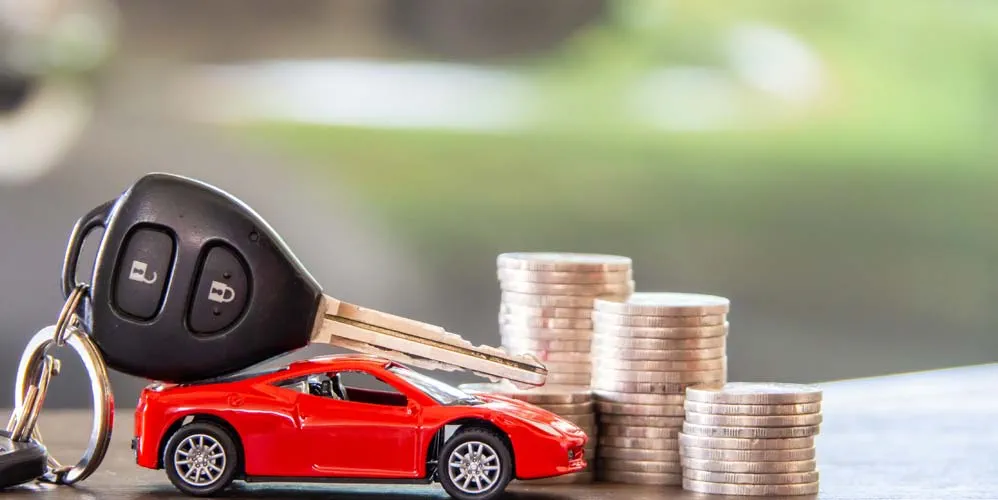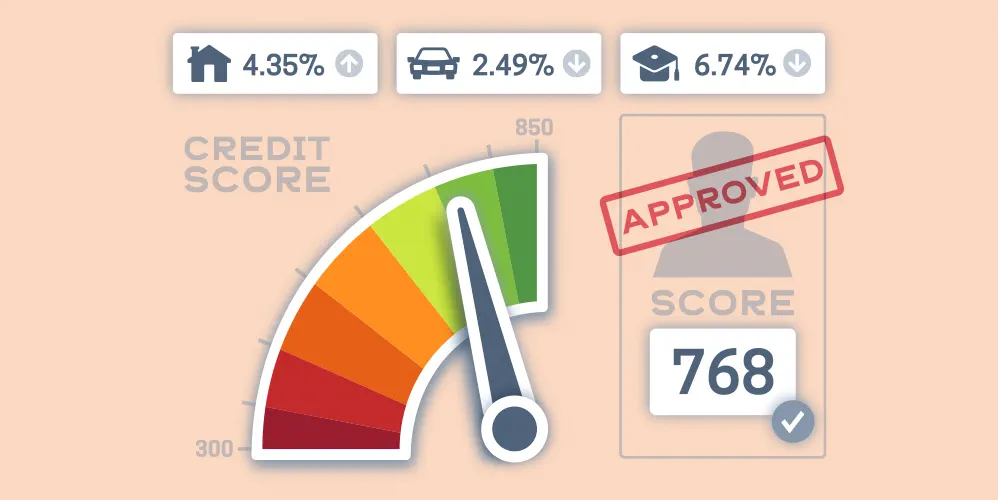
How to Get a Car Loan?
01 Nov 2019

How to Get a Car Loan?
Now that you have zeroed in on your dream car after test driving a few of them, you probably cannot wait any longer to buy it. Now the next obvious question is, what are your financial options for buying the dream car? For many of us, a car loans seems like a comfortable financial option to consider, given that it leaves cash liquidity intact and you can get a car loans in easy EMI options at affordable interest rates, so it does not pinch your pocket much. Here’s a guide on what to do next!
First things first. Check if you are eligible for a car loans . Once you know you meet the eligibility criteria, it speeds up the process of getting a loan approved.
Am I eligible for a car loan?
Each bank has its own criteria for . It could be minimum annual income or minimum years of employment among others.
For example, Bank of Baroda provides up to 90% financing for the said category of borrowers-
- Salaried Employees
- Businessmen, professionals and farmers
- Directors of Private and Public Limited companies, Proprietor of Proprietorship Firms, partners of Partnership Firms.
- Corporates (Partnership, private Limited, Public limited and Trust)
- NRIs/PIOs
What are the documents required for a car loan?
Though documents required may vary from bank to bank, but most commonly, banks ask for the documents mentioned below along with the loan application form-
For Proof of identity, one of these documents van be produced:
- Passport
- Driving license
- Latest three months old credit card statement.
- Salary slip
- Income tax assessment order
- Utilities like electricity bill, landline bills-not older than 6 months.
- Bank statement
- Letter from employer/public authority (should be validated by bank)
- iVoter ID card
- Retired government employees can produce pension payment orders
- Registered leave and license agreement or sale deed or lease agreement.
Please note, every time there is a change of address or change in any other detail furnished to the bank, the applicant will need to immediately notify it to the bank along with updated document proofs.
Proof of income:
- Bank statement of the last three to six months
- Salary slip and form 16 (for salaried persons)
- Income tax returns (for self-employed persons)
Margin
Lenders require you to pay a portion of the price of the car, also called the margin, as the lender pays the rest, which becomes your loan value. In case of Bank of Baroda, the margin is 10% on the ‘on the road’ price of the car.
Popular Articles
Related Articles







Guide to Getting Agriculture Loan: Application, Eligibility & Required Documents



-
Disclaimer
The contents of this article/infographic/picture/video are meant solely for information purposes and do not necessarily reflect the views of Bank of Baroda. The contents are generic in nature and for informational purposes only. It is not a substitute for specific advice in your own circumstances. Bank of Baroda and/ or its Affiliates and its subsidiaries make no representation as to the accuracy; completeness or reliability of any information contained herein or otherwise provided and hereby disclaim any liability with regard to the same. The information is subject to updation, completion, revision, verification and amendment and the same may change materially. The information is not intended for distribution or use by any person in any jurisdiction where such distribution or use would be contrary to law or regulation or would subject Bank of Baroda or its affiliates to any licensing or registration requirements. Bank of Baroda shall not be responsible for any direct/indirect loss or liability incurred by the reader for taking any financial decisions based on the contents and information mentioned. Please consult your financial advisor before making any financial decision.
5 Steps to Apply for a Home Loan
5 Steps to Apply for a Home Loan
You may have heard people say that real estate is the best kind of investment. Its value appreciates over time, and you also get several tax benefits under various Sections of the Income Tax Act of India, 1961. But with ever-escalating property rates, you may not have sufficient savings to buy a property on your own. Thankfully, you can approach Bank of Baroda for a Home Loan. The bank offers a wide variety of Home Loans at affordable interest rates. You can get financing of up to 90% of the property's value and repay the loan in affordable Equated Monthly Instalments (EMIs) over tenures lasting up to 30 years. To get you started, we have outlined the bank's Home Loan application process here.
5 Steps on How to Apply for a Home Loan
Eligibility
Before you begin the Home Loan application process, you need to ensure that you are indeed eligible for the loan. The bank determines whether you qualify for a Housing Loan after considering several factors such as your age, employment status, income, and monthly expenses. You have to input these details in the Bank of Baroda Home Loan Eligibility Calculator. The calculator instantly computes whether or not you are eligible for the loan. If you qualify, it calculates the maximum loan amount you can get. Note that the calculator only computes a rough estimate of the loan amount. The bank determines the actual loan amount you can get, after assessing the loan application form.
Document Submission
After getting a rough estimate of the loan amount you can get, you can move to the next step in the Home Loan application process. You need to fill the loan application form. You can fill the form online, directly through the bank's website. You have to provide your personal and financial details, based on which the bank confirms the maximum loan amount for which you are eligible. You also have to provide your necessary documents such as your ID, age, and income proof documents etc. You have to also submit property documents like sale or title deeds, NOC or the allotment letter etc. You need these documents irrespective of whether it's a new or existing property.
Property Evaluation
Since a Home Loan is a high-value investment for the bank, the bank does its bit in evaluating the property. A surveyor appointed by the bank visits the property's site and checks the market value of the property. While the bank surveys the property, it would help to have free and clear titles. Bank also appoint a lawyer to check that the title deed and other documents are clear from leagal angle
Documentation
The bank provides a format for you to draw up the loan agreement. All costs and charges relating to the Home Loan, including the loan processing fees, stamp duty charges, loan administration charges, etc., should be borne by you. You may factor in these charges as part of your loan amount as well. The Home Loan agreement document comprises details such as the bank's loan amount, the levied interest rate, the EMI payable, and the loan tenure. It also includes other essential terms and conditions regarding prepayment, default, collateral, etc., which you must read carefully.
Home Loan Disbursal
In the final step of the Home Loan application process, the bank disburses the loan amount. Based on the type of Home Loan you have applied for, the money will be disbursed either to you or the builder. The bank also determines whether the loan amount should be disbursed in partial instalments or as a lump sum. Once the loan amount is disbursed, your Home Loan is officially underway. It begins when you pay your first EMI and ends when you pay the last.
Types of Home Loan
Having explained how to apply for a Home Loan, let us look at the different types of Home Loans offered by Bank of Baroda. These are of 9 types:
The Standard Home Loan that enables you to buy a new, existing pre-owned, or under-construction property.
A Home Construction Loan enables you to construct a house on a piece of land owned by you.
A Home Loan to buy a plot of land, on which you will construct a property in the future (within 36 months).
A Home Extension Loan allows you to enlarge the size of your existing house, build extra floors, etc.
A Home Improvement Loan helps to finance the costs associated with renovating your existing house.
A Top-up Home Loan can get you additional financing on your existing Home Loan.
A Balance Transfer Home Loan allows you to transfer your loan from another lender to Bank of Baroda and benefit from a reduced interest rate.
A Pradhan Mantri Awas Yojana (PMAY) Home Loan allows you to get subsidised interest rates on your Home Loan. This funding type is useful if you belong to the economically weaker section, a light-income group or a medium-income group per PMAY policies.
A Pre-approved Home Loan wherein you can first get approval for a loan and then finalise the property based on your eligibility.
Documents for Home Loan Application Process
Besides knowing how to apply for a Home Loan online, you should also be aware of the documents you need to submit while applying for a Home Loan. These include:
Your age proof documents
You need to provide any government-approved document with your date of birth mentioned on it. Age proof documents help banks assess if you are in the 21-65 years age group (at the time of repaying the final EMI) to be eligible for the loan. This document could be a PAN Card, Aadhaar Card, Passport, Driving License, etc.
Your identity proof documents
Any Government-approved document featuring your photograph is accepted as a valid identity proof document. It could be your PAN Card, Aadhaar Card, Passport, Driving License, Voter ID Card, etc.
Your address proof documents
Any Government-approved document featuring your current/permanent address is accepted as a valid address proof document. It could be your Aadhaar Card, Passport, Driving License, Voter ID Card, Ration Card, Utility bills, etc.
Your income and employment proof documents
You need to provide documents validating your employment, such as your offer letter and designation, salary slips, increment letters, etc. If you are self-employed or a business owner, you need to provide your bank statement, profit and loss statements, proof of business documents, etc. All applicants must also provide their income tax returns for the last three years.
Property-specific documents
Finally, you must provide all documents related to the property you intend to buy such as the No Objection Certificate supplied by the society or builder, the original sale deed, letter of allotment, bank statements and receipts showing advance payments, etc. If you are taking a Home Construction Loan, you must also provide a document on estimating the costs associated with property construction, approved map etc.
Factors to Consider Before Applying Online for Home Loan
Now that you know how to apply for a Home Loan online, you should consider the factors mentioned below before beginning the Home Loan application process.
Consider the bank's lending rate and the maximum loan amount you can get based on your income.
Consider your credit scores and ensure they are above 701 points to get an affordable Home Loan interest rate along with the repayment tenure of your choice.
Consider repaying any existing loans and credit card bills to enhance your credit score, and by extension, your eligibility.
Consider opting for a longer-tenure loan to reduce the monthly instalment amount significantly.
As is apparent, the Home Loan application process is quite simple and straightforward. Now that you know how easy it is to apply for A Bank of Baroda Home Loan visit the Home Loan Section of our website to get started.
How to Remove Car Loan Hypothecation After Car Loan Repayment
A secured loan is a loan in which an asset is hypothecated to the lender. Since the lender finances the purchase of the asset, the original purchase papers of the asset are with the lender. When it comes to purchase of a home, the asset’s ownership shifts to the borrower once he has completely repaid the loan. In gold loans, the gold is left under lock and key with the lender. Once the loan is repaid, this gold is given back to the borrower. However, it is not the same when it comes to a car loan.
In a car loan, the car purchased is hypothecated to the lender. The lender pays the funds to purchase the car. However, a car also has to be registered with the Regional Transport Office (RTO) before it can be driven on the road. In such a case, the name of the lender appears on the registration certificate (RC) of the vehicle/ in the records of Regional Transport Office. This means you need to take a few additional steps once the car loan is repaid for car loan hypothecation removal. Once the car loan hypothecation is removed and the car’s ownership is completely in your name, then you will have a clear title and ownership to your car. This is especially important while getting insurance. In case anything happens to the car, the Insurance claim will go to the owner of the car, which in case of hypothecation, will be in favor of the lender.
This is why car loan hypothecation removal is important.
How to remove hypothecation from RC after car loan repayment/termination:
Step 1: Repayment of car loan
In the hypothecation agreement of car loan, the name of the lender appears as the owner for the car. To start the procedure for removal of the lender’s name, you need to repay the car loan completely. The loan must be paid off and a nil balance must appear in the lender’s books.
If you are planning to prepay your car loan, it is better to inquire with the lender about their prepayment charges and conditions. Sometimes lenders have prepayment charges on these loans and this can go up to 2%.
Once you’ve completely paid off the loan, you need a no dues certificate from the lender. This certificate will state that you have completely discharged the dues to the lender.
Step 2: Collection of documents from the lender
Once the loan is repaid, the lender will give you the no dues certificate. Along with this, you need to collect:
No objection certificate:
This certificate states that the lender does not have any objection with car loan hypothecation removal. One important point to remember is that you must take multiple copies of the No Objection certificate. This No Objection certificate will need to be submitted to the RTO and to the Insurance company. You will also need one copy for your own records. Usually, the no objection certificate is valid for 3 months. So, you must approach the RTO immediately after you get the no objection certificate.
Form 35
This form is a notice of termination of hypothecation. This form also has to be made in triplicate or in 3 copies. Each state usually has its own format for this form which can easily be found online or at the RTO.
Step 2: Submission of documents to the RTO
Once you have the documents from the lender, you need to visit the Regional Transport Office or the RTO with a set of documents that includes:
Original form 35 signed and stamped by the borrower and bank
Original Bank No Objection Certificate
Attested copy of PAN
Attested copy of insurance policy of car
Original Registration Certificate
Address proof
Copy of Pollution Under Control (PUC) certificate
These documents will have to be submitted to the RTO. If your address does not match the address in the registration certificate, you will need to submit Form 33 which is for change of address.
Once you submit these documents to the concerned officer at the RTO, they will get them verified. You need to pay the respective fees to get the process completed. The officer will give you a time and date on which you can collect your updated Registration Certificate (RC)
Step 3: Collect your updated Registration Certificate
The date and time for the visit will be specified when the documents are submitted. When you visit the RTO on the specified date, you will get the updated RC. If there are any mistakes in the details, you can get them corrected and collect the RC on a future date. Once you collect your updated RC, you will have completed all car loan hypothecation removal formalities.


Leave a Comment
Thanks for submitting your details.